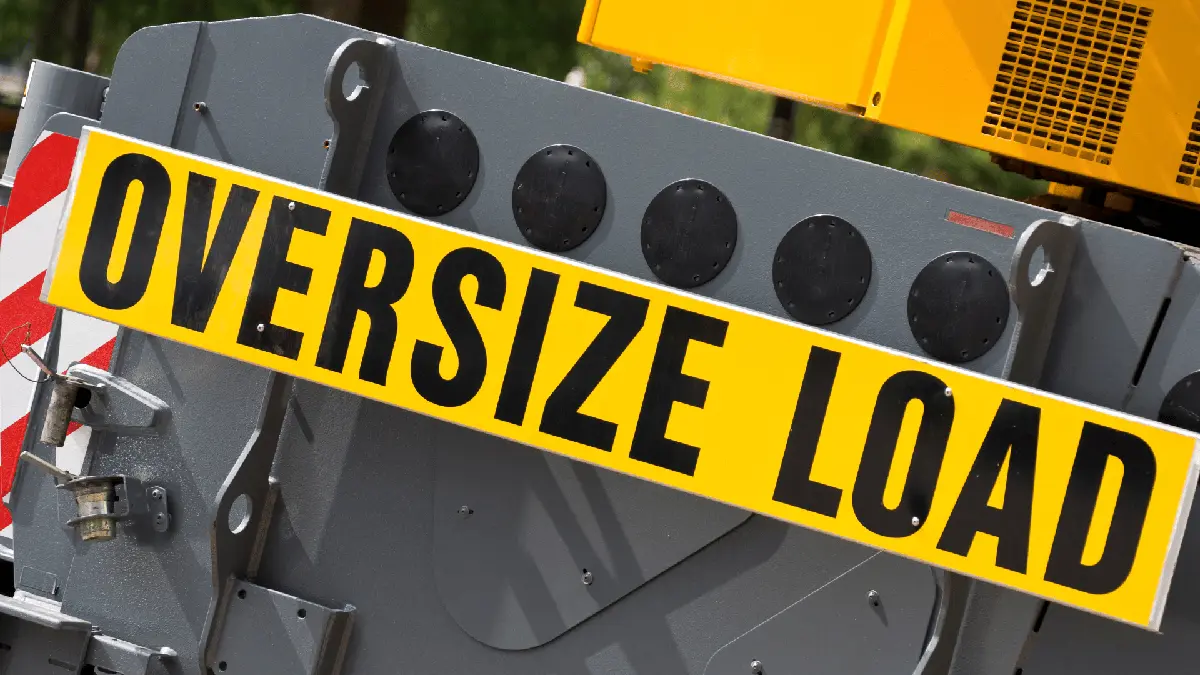Every year, hundreds of thousands of heavy machinery such as cranes, jumbo drilling rigs, excavators, bulldozers, and many more types are moved across the US for construction, agriculture, mining, etc.
Then, there are also large RVs and campers used by individuals such as snowbirds, traveling couples, and nomads that need to be moved—sometimes across the country. All of these require heavy equipment shipping solutions through a specialized oversized equipment hauling company.
The quotes you get from such companies for handling these gigantic machines are enormous, so it makes sense to save as much of your money as you can. This guide will help you do just that, so keep reading.
Why Heavy/Construction Equipment Transportation Costs So Much?
Construction or other heavy equipment transport is unequivocally an expensive undertaking. The quotes are 10 to 20 times more than regular vehicle shipping services, and there are good reasons for this; learn them below:
Use of Specialized Equipment Due to Size and Weight
Flatbed trailers, heavy-duty cranes, and other specialized rigging are essential for loading, unloading, and securing the equipment during transit.
Furthermore, Ratchet straps are commonly used to tighten and adjust as needed. The ratcheting mechanism allows even tightening across the entire strap length to hold machinery firmly in place.
Other equipment, like thick chains, provides an incredibly strong restraint and is often needed for extremely heavy equipmentt that exerts high tension forces. Chains will not loosen or break like straps potentially could.
Cross members on the trailer provide rigid anchor points to attach these straps and chains, distributing the restraining loads across the trailer structure.
Winches make tightening the straps or chains a simple one-person job, critical for safely and efficiently securing bulky payloads. Wheel chocks are equally important, as they prevent wheeled machinery’s rolling or slippery movement during transit.
All of these equipment cost a lot of money to buy, and maintain regularly, which increases the cost to ship heavy loads.
Long Distance Shipping Adds to Fuel and Labor Expenses
The fuel required to move these massive machines across the country, the drivers’ labor costs, and any additional support staff can significantly increase the shipping expenses.
- Increased fuel costs for long-distance transport
- Labor expenses for drivers and support staff
- Potential need for overnight accommodations for drivers
Transportation Permits are Often Necessary
Transporting oversized or overweight loads often requires obtaining specialized permits from state and local authorities.
These permits can significantly increase the shipping process’s costs, as they may involve inspections, fees, and additional coordination to ensure compliance with regulations.
| Permit Type | Description |
|---|---|
| Non Divisible Loads | Issued for loads that can only be separated into smaller loads without compromising the intended use, destroying value, or requiring over 8 hours of dismantling work. The applicant must prove the number of hours required. |
| Divisible Loads | Issued based on historical “grandfather” rights or Congressional authorization for a specific commodity or route at a greater size/weight. |
| Overwidth Permits | Granted for vehicles exceeding the 102-inch width limit, including manufactured housing. States have the discretion to issue these permits. |
Expert Labor for Assembly/Disassembly and Loading/Unloading
Safely loading, transporting, and unloading heavy construction machinery requires specialized expertise.
Hiring experienced professionals to handle the assembly or disassembly and the loading and unloading is essential to ensure the equipment arrives at its destination undamaged. This expert labor adds to the overall shipping costs.
Escort Vehicles Required
In many cases, oversized or overweight loads require escort vehicles to accompany the shipment.
These vehicles, which may include police escorts or specialized pilot cars, help to ensure the safe passage of the load and alert other drivers to oversized equipment on the road.
The costs associated with these escort vehicles can further increase the overall transportation expenses.
9 Lesser-Known Ways to Save Money on Shipping Oversize Loads:
Transporting heavy equipment/oversized loads can be a significant expense, but several strategies can help you get better final quotes.

Maximize Container Weight Limits
The standard 44,000 lb container limit is often just a guideline, and you may be able to load significantly more weight by understanding the actual legal limits.
Work closely with your logistics partners to determine the maximum weight the containers can safely handle, and you could see substantial savings by packing more into each shipment.
Optimize Packaging Dimensions
Making your packaging slightly longer, taller, or wider can enable you to fit more items within each container or case, maximizing your space utilization and reducing the number of shipments required. This is more beneficial for international heavy equipment shipping.
Leverage Load Planning Software
Specialized load planning software can help you maximize the efficiency of your container space, optimizing the stacking and weight distribution within each shipment.
This advanced planning can reduce wasted space and ensure your loads are transported as cost-effectively as possible.
Disassemble for Shipping
Rather than shipping your heavy equipment fully assembled, consider disassembling it for transport and then reassembling it at the destination.
This can often result in substantial cost savings, as disassembled parts are easier and less expensive to ship.
| Shipping Method | Example Cost Savings |
|---|---|
| Fully Assembled | $5,000 |
| Disassembled and Reassembled | $3,500 |
Restrict Dimensions to 102" Width
If your heavy equipment shipment can be restricted to a 102" width, you can often avoid the need for costly wide load permits.
This simple dimensional adjustment can lead to significant savings, as wide load permits can add hundreds or even thousands of dollars to your transportation costs.
Provide Accurate Measurements
Ensuring your logistics partners accurately measure your heavy equipment is crucial for minimizing costs. Provide detailed photos and technical drawings to your transportation providers to help them plan the most efficient and cost-effective routes and loading methods.
- Accurate measurements help avoid surprises and additional fees
- Clear photos and drawings ensure your equipment is properly handled
- Detailed information enables your partners to optimize the shipment
You can get help from Ritchiespecs.com to get general specifications of your machine to verify your own measured numbers. Here’s an example of a John Deere 646B Compactor showing specifications and technical drawings for free:

Utilize a Single Transportation Partner
Utilizing a single partner for your end-to-end equipment transport solutions can help you avoid paying multiple handling fees.
This streamlined approach can offer some cost savings compared to working with multiple transportation providers.
Consider Transloading
Transloading, the process of transferring cargo from one mode of transportation to another, can be a valuable strategy for circumventing weight limits or access issues.
If your heavy equipment cannot be loaded directly onto a truck or container, translating it to a different mode of transportation, such as rail, maybe a cost-effective solution.
Plan for Winter Surcharges
Heavy equipment shipments during winter may incur additional surcharges due to weather-related factors at ports and other transportation hubs.
If you anticipate and budget for these potential surcharges, you can avoid unexpected expenses and ensure your heavy equipment shipping remains within your planned budget.
Local Heavy Equipment Shipper Vs. Specialized Equipment Transport Company - Where’s More Value to Money?
When shipping heavy equipment, you have two primary options: working with a local heavy equipment shipper or partnering with a specialized equipment transport company.
Both solutions offer unique advantages, and understanding the trade-offs can help you determine which services provide the best value for your money.
Advantages of Using a Local Heavy Equipment Shipper
- Familiarity with the local market and transportation routes
- Potentially lower rates for short-distance or regional moves
- Personalized service and direct communication with the shipping provider
The benefits of using a local heavy equipment shipper often lie in their intimate knowledge of the area and established relationships with local carriers. This can translate to more competitive pricing, especially for short-distance or regional transport. Additionally, you may enjoy a more personalized service experience when working with a local provider.
Advantages of Partnering with a Specialized Equipment Transport Company
- Expertise in navigating complex heavy equipment shipping logistics
- Ability to handle long-distance or cross-country moves efficiently
- Access to a broader network of transportation options and resources
On the other hand, specialized equipment transport companies offer a distinct advantage in their deep industry expertise and expansive network. These companies have the knowledge and resources to efficiently manage the complexities of heavy equipment shipping, including navigating regulatory requirements, optimizing transport routes, and coordinating multi-modal logistics. This can be particularly valuable for long-distance or cross-country moves.
| Criteria | Local Heavy Equipment Shipper | Specialized Equipment Transport Company |
|---|---|---|
| Expertise | Familiar with local market and transportation routes | Deeply experienced in handling heavy equipment shipping logistics |
| Transport Capabilities | Suitable for short-distance or regional moves | Equipped to handle long-distance and cross-country transports |
| Pricing | May offer more competitive rates for local/regional moves | Able to provide more comprehensive, cost-effective solutions for complex shipments |
| Service Experience | Personalized and direct communication with the shipping provider | Access to a broader network of transportation options and resources |
Saving Money With Seasonal Demand for Heavy Equipment Transport Services:
If you want to save money on your heavy equipment shipping, then you have to learn to spot the seasonal demand patterns in the trucking industry. Looking at the real-time and historical data at DAT Freight & Analytics is a great way to do so. As per their data, the Load to Truck ratio decreases from September to December.
Load to Truck Ratio
A higher truck-to-load ratio is generally considered better in trucking. Here’s a brief explanation:
The truck-to-load ratio, often called the truck utilization rate, measures how efficiently a truck’s capacity is being used. It’s calculated by dividing the actual load weight by the truck’s maximum capacity.
A higher ratio means:
- More efficient use of the truck’s capacity
- Potentially lower transportation costs per unit of cargo
- Fewer trips are needed to move the same amount of goods
To understand the increase or decrease in demand for transport, we typically look at the truck-to-load ratio:
- Higher truck-to-load ratio: Generally indicates increased demand for transport
- Trucks are running closer to full capacity
- More goods are being shipped relative to available truck space
- Lower truck-to-load ratio: Generally indicates decreased demand for transport
- Trucks are running with more empty space
- Fewer goods are being shipped relative to available truck space
This ratio serves as a good indicator because when demand for shipping is high, companies try to maximize the use of available truck space, leading to higher ratios. Conversely, when demand is low, trucks may run partially empty more often, resulting in lower ratios.

So, as per the graph I’ve compiled, you will see that the truck-to-load ratio for flatbeds, which are the most commonly used for hauling heavy/oversized loads, is low from September to December every year. Here are some numbers:
- 2018: The truck-to-load ratio for 2018 was 18.11 in September, 13.36 in October, 12.24 in November, and 15.45 in December, compared to the highest of 111.2 in April.
- 2019: The truck-to-load ratio for 2019 was 14.85 in September, 9.05 in October, 7.09 in November, and 10.56 in December, compared to the highest of 31.44 in March.
- 2020: This was a bad year for logistics altogether due to COVID-19, so numbers are all over the place. Therefore, at the start of lockdowns in the US from March 15th, 2020, the truck-to-load ratio started declining from 23.82 in Feb to 8.86 by the end of March. This further decreased to 4.43 in mid-April. Since global logistics got disrupted, trucking demand increased in the off-season from Sept to December, reaching 52.15 in December 2020 from 45.23 in September 2020.
- 2021: Things started becoming normal for the logistics industry in 2021, and so the truck-to-load ratio for 2021 was over 50 in the first two quarters of the year, reaching 117.13 in May. Then, it started decreasing. The ratio was 42.55 in September, 42.62 in October, 33.24 in November, and 44.05 in December 2021. It’s still higher than usual, but that’s because of the backlog of hauls due to COVID restrictions and lockdowns.
- 2022: Things have become relatively normal since 2022, with the highest ratio of 103.59 in February 2022 and the lowest range from September to December, ranging from 14.42 in September to 8.4 in December 2022.
- 2023: The trucking industry was slower throughout 2023, peaking at a mere 20.19 in February. Still, the trend of demand being lower from September to December stayed the same, from 9.18 in September to 7.93 in December.
Based on the data above and the chart below, it’s clear that as long as an anomaly like COVID-19 doesn’t halt global logistics, the trend of the slow season from September to December (Fall and Winter) stays pretty standard. This is when you should move your heavy/oversized equipment to get the best possible rates.
How to Ensure Your Heavy Equipment Shipping Quotes Are Free of Any Surprises?
Moving gigantic machines weighing thousands of pounds is not a small feat. Plus, these machines, such as construction cranes, mining drills, agriculture tractors, or harvesters, cost thousands to purchase; you don’t want any random shipping service provider moving them and getting surprised with the slapdash job they do at the end. So, to minimize or even eliminate any surprises, here’s what you can do:
Provide Exact Details of the Equipment:
When getting quotes for heavy equipment shipping services, make sure to provide accurate weight and dimension measurements. If you have any technical specifications and images of the machinery, provide those as well. Also, provide the exact zip codes of the pick-up and drop-off locations.
Any modifications to the machine should be discussed upfront as well. This information is used to calculate estimated quotes for hauling the oversize load. The more accurate your information is, the less difference there will be between the initial and final quotes.
Verify Charges Upfront with a Complete Quote
Review the quote thoroughly before signing on the dotted line to understand all associated fees.
Look for line items such as fuel surcharges, permit fees, and any additional handling charges.
This level of transparency will help you avoid unexpected expenses and budget accordingly.
Inspect Equipment Thoroughly Before and After Transport
Carefully inspect your heavy equipment before and after transport to document its condition. This will protect you in the event of any damages during the shipping process.
Consider taking photographs or video as evidence, and ensure the transport provider’s liability coverage is clearly outlined in the contract.
Consider Reputable Carriers with Experience Shipping Heavy Equipment
When selecting a transport partner, prioritize companies with a proven track record of safely moving heavy equipment.
Ask for references, review their safety ratings, and inquire about their specialized equipment and training for this type of service.
Specify Route, Timeframe, and Other Unique Details
Provide your transport provider with the specific route, timeframe, and any other unique details that may impact the shipping process.
This will help them plan accordingly and avoid any unexpected challenges or delays that could lead to additional costs.
Review Small Print Fine Print for Hidden Assumptions
Don’t overlook the fine print in your shipping contract. Carefully review the terms and conditions to understand liability, insurance coverage, and any other fine print that could impact your heavy equipment transport experience.
Clarify Liability in Case of Accidents or Damage
Discuss liability responsibilities with your transport provider upfront. Understand who is responsible for damages or accidents during the shipping process, what kind of perils are covered, and ensure your equipment is adequately insured to protect against unexpected costs.
Easy Auto Ship Offers Top-Notch Heavy Equipment Transport Solutions at Affordable Rates:
It’s not every day you need to move giant farming, construction, mining, or other industrial machines, so using someone who does this for a living makes more sense, no? The same goes for RV or other oversize vehicle owners. Offering specialized oversize/heavy equipment shipping solutions is our bread and butter.
We know the technicalities involved, such as getting permits, using special equipment to secure machinery of irregular size and dimensions, and safely hauling it across the US. You can call (888) 687-3243 to get free, no-obligation quotes for all kinds of heavy equipment moving services. Our team would love to take the logistical hassle off your shoulders.





